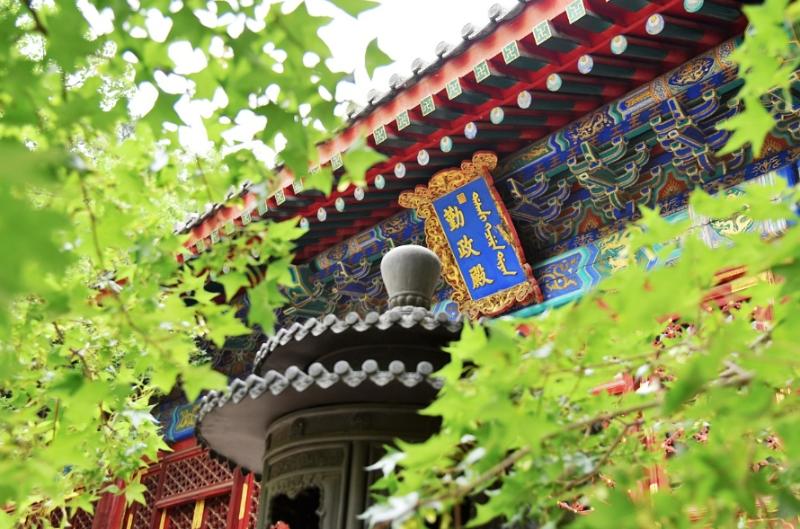Qinzheng Hall in Fragrant Hills Park, Beijing
Qinzheng Hall, located within the East Palace Gate of Fragrant Hills Park in Haidian District, Beijing, is one of the most iconic royal buildings in the area. Its magnificent architecture reflects the exquisite craftsmanship of ancient Chinese royal architecture, making it one of the key attractions in Fragrant Hills Park.

1. Historical Background
- Establishment: Built in the tenth year of the Qing Emperor Qianlong's reign (1745), Qinzheng Hall served as a place for handling government affairs and receiving palace ministers during Emperor Qianlong's stay at the Jingyi Garden in Fragrant Hills. The name "Qinzheng" symbolizes diligent governance.
- Destruction and Reconstruction: Qinzheng Hall was destroyed by the Anglo-French Allied Forces in the tenth year of the Xianfeng reign (1860), leaving only its foundation. In 2002, Fragrant Hills Park initiated a reconstruction project at the original site, which was completed in July 2003, becoming one of the reconstructed iconic buildings.
2. Details of Reconstruction
- Reconstruction Project: The reconstruction project covered an area of over 1,000 square meters, including the restoration of mountain rocks and roads within the scenic area. High-quality materials such as red pine and white pine were used, and traditional techniques were employed for restoration and decoration.
- Carvings and Inlays: The fully restored Qinzheng Hall includes original exhibits, including a series of exquisite cloisonné treasures. Replicating cloisonné products was challenging, requiring replication designs based on relevant photos and materials.
3. Architectural Layout
- Composition of the Scenic Area: The Qinzheng Hall scenic area consists of the main hall, north and south side halls, morning court, artificial hills, Moon River, and archways, covering an area of 8,000 square meters.
- Characteristics of the Main Hall: The main hall, with a width of 5 bays and a total width of 28 meters, adopts a single-eave gable-and-hip roof structure with blue bricks and gray tiles. With nine ridge lines on the roof, it presents a magnificent sight and serves as the core building of Qinzheng Hall.
4. Main Attractions
- Throne and Carved Dragon Beds: The central display in the main hall features a gold-lacquered throne, consisting of a carved dragon gilded screen, throne, footrest, and platform. Originally, there were 12 pine beds each in the north and south side halls, used as resting places for royal officials.
5. Cultural Significance
- Historical Allusions: The inscription on the lintel of the main hall reads "Yiqi He You," symbolizing the harmonious coexistence and prosperity between man and nature. The couplet inside describes scenes of diligent governance by the emperor and abundant harvests by farmers.
6. Travel Information
- Location: Situated within the East Palace Gate of Fragrant Hills Park, easily accessible by transportation for visitors to arrive conveniently.
- Opening Hours: Open daily from 8:00 AM to 5:00 PM, allowing visitors to explore and experience the charm of ancient royal architecture.
Qinzheng Hall, as a significant attraction in Fragrant Hills Park, not only showcases the unique charm of ancient Chinese architecture but also embodies rich historical and cultural connotations. Visitors can admire the grandeur of royal architecture, feel the changes of history, and experience the unique charm of ancient court culture here.
Q&A:
Q1: What is the historical significance of Qinzheng Hall in Fragrant Hills Park?
A1: Qinzheng Hall, built during the Qing Emperor Qianlong's reign, served as a place for handling government affairs and receiving palace ministers, symbolizing diligent governance. Despite being destroyed and reconstructed, it remains a key historical site in Fragrant Hills Park.
Q2: What architectural features make Qinzheng Hall distinctive?
A2: Qinzheng Hall boasts magnificent architecture, characterized by its single-eave gable-and-hip roof structure with blue bricks and gray tiles, as well as intricate carvings and inlays, showcasing the exquisite craftsmanship of ancient Chinese royal architecture.